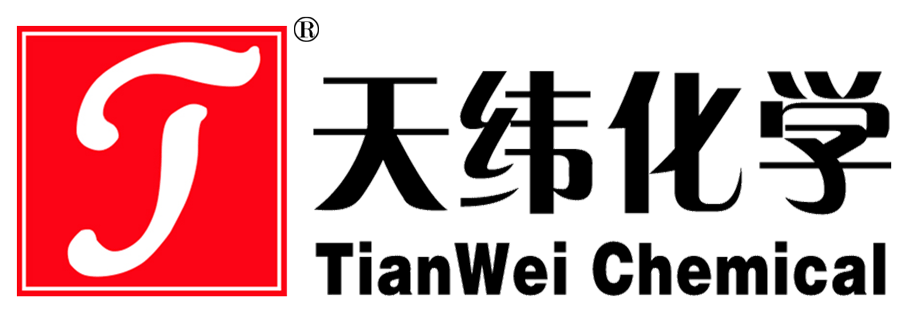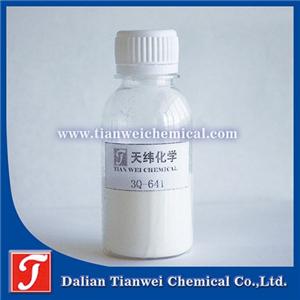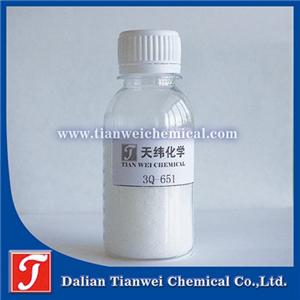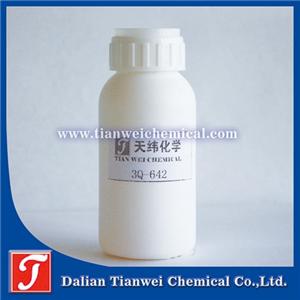-
Characteristics and advantages of dibromonitrilopropionamide (DBNPA)
Dibromonitrilopropionamide (alias dibromocyanoacetamide, DBNPA for short) is a new and efficient bactericidal algaecide and water treatment agent. The material has the advantages of high-efficiency broad spectrum, easy degradation, no residual residue, no pollution to the environment, and at the same time,
18-01-2021 -
Analysis of the Application and Advantages of IPBC Anti-mold Agent for Water-based Ink
Water-based ink has been widely used in printing, writing, marking and other fields due to its environmental friendliness, non-toxicity and easy cleaning. However, the moisture and organic components in water-based ink are prone to mold growth, causing the ink to deteriorate and stink, which affects the printing quality and the service life of the product. Therefore, the application of fungicides in water-based ink is particularly important. IPBC (iodopropargyl butyl carbamate), as a highly efficient, low-toxicity and environmentally friendly fungicide, has demonstrated unique application value in the field of water-based ink.
12-12-2025 -
Innovation in Antibacterial Technology for artificial marble countertops: A Leap from materials Science to healthy living
In high-frequency contact scenarios such as kitchens and bathrooms, traditional artificial marble countertops, due to their high porosity (typically reaching 0.5% to 2%), are prone to becoming breeding grounds for bacteria. Research shows that after three years of use, the surface colony count of a regular countertop can reach 1,200 CFU/cm², while artificial marble with added antibacterial agents can keep this value below 50CFU/cm². This technological breakthrough not only addresses the pain points of home hygiene but also promotes the upgrading of the building materials industry towards health and functionality.
08-12-2025 -
The effect of silver ion antibacterial agent on PVC crystal tablecloths
The effects of using silver ion antibacterial agents in PVC crystal tablecloths are mainly reflected in the following aspects: Highly effective antibacterial and bacteriostatic properties Silver ion antibacterial agents destroy the structure of microorganisms by releasing silver ions, thereby inhibiting the growth and reproduction of bacteria, molds and other microorganisms. Its mechanism of action includes:
04-12-2025 -
Technical Analysis and Market Application of Adding Antibacterial and Antifungal Agents to Artificial Boards
I. Technical Principles and Core Functions Antibacterial and antifungal agents achieve protective functions by destroying the cell structure of microorganisms and inhibiting their metabolic reproduction. In view of the characteristic that artificial boards are prone to erosion by molds such as Aspergillus Niger and Penicillium orange, modern technology adopts a multi-component compound system:
02-12-2025 -
The 0-level anti-mold agent for PE wood-plastic is long-lasting and effective
PE wood-plastic anti-mold agent is a chemical additive specifically designed to inhibit the growth of mold in PE wood-plastic composite materials. Its core function is to prevent the performance decline of materials due to mold by destroying the cell structure of mold or interfering with the metabolic process, thereby extending the service life and enhancing the application value. The following is an introduction from four aspects: component types, mechanism of action, application advantages, and product selection
28-11-2025 -
Antibacterial and deodorizing auxiliaries for clothing fabrics: A new choice for health and comfort empowered by technology
In the fast-paced modern life, people's demands for clothing have gradually shifted from merely providing warmth and covering the body to pursuing functionality and health. Among them, the antibacterial and deodorizing function, which is directly related to the health and comfort experience of the wearer, has become an important development direction in the field of clothing fabrics. Antibacterial deodorizing auxiliaries, as the core material for achieving this function, are bringing revolutionary changes to the textile industry through continuous technological innovation.
28-11-2025 -
Is it good for hospitals to use antibacterial coatings with added antibacterial agents
It is a good choice for hospitals to use antibacterial coatings with added antibacterial agents. Their advantages are reflected in reducing the risk of cross-infection, enhancing the ability to prevent and control infectious diseases, purifying the air, protecting medical staff, preventing wall mold, extending service life and reducing maintenance costs, and meeting environmental protection and safety standards. The specific analysis is as follows:
27-11-2025 -
The function of antibacterial agents for acrylic automotive coatings
Adding antibacterial agents to acrylic automotive coatings mainly serves to inhibit the growth of microorganisms, protect the coating and substrate, meet hygiene and safety requirements, and maintain product performance and appearance. The specific analysis is as follows:
24-11-2025 -
How to apply an antibacterial coating to PVC flooring
The production of antibacterial coatings for PVC flooring can be achieved through various processes such as direct addition of antibacterial agents, masterbatch of antibacterial agents, surface coating, and lamination. By combining physical, chemical or biological means, the antibacterial function can be realized, and the coating performance can be optimized through sol-gel methods and electrophoretic coating methods.
21-11-2025




